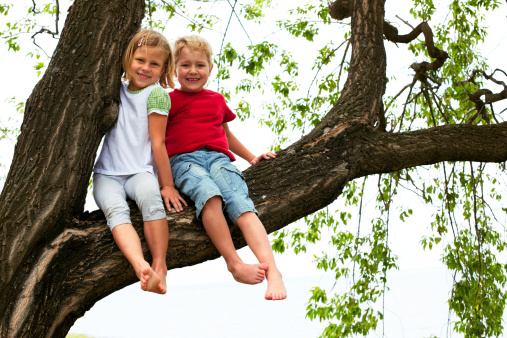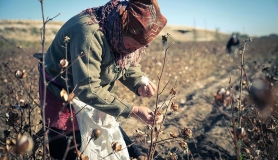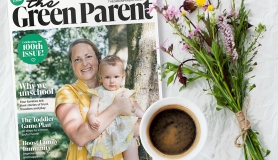‘Natural spaces are essential for human development and well being,’ says David Attenborough. ‘Children need to have contact with nature on a daily basis, access to open space aids learning, fuels curiousity and feeds their natural sense of exploration,’ he continues.
WHAT CREATES HAPPY AND HEALTHY HUMANS? It is very rare for me to find a child under seven who isn’t happy playing outdoors. They happily play on their own, in their own time-less worlds or with others. They are totally absorbed and engaged, exploring the world, taking risks and being rewarded in all sorts of ways by their endeavours. This is a very natural process that humans have been doing for thousands of years. In an intact village, the elders mentor the young people whilst encouraging them to discover life (nonhuman and human) for themselves, offering questions that push their enquiry further, while their parents get on with their time-driven lives. As we grow up, if we have been supported well enough, we have developed a healthy web of relationships to others, ourselves and the natural world. Our sense of play, our curiousity, our vitality, our care for others and ourselves, support us in the journey of becoming an adult which with a little commitment, leads to a fulfilling life. In traditional cultures around the world, key transitions have always been honoured. These mark and celebrate the human stages of development and teach us how to live with purpose. In turn this safeguards the regeneration of life. Unfortunately, most of us have not been mentored by elders. The lack of support to help us relate to ourselves, others and nature in a healthy way, has left many of us disconnected and dissatisfied. As a society we are growing richer every year but our well-being is diminishing. We are trying to fill the empty hole with consumption but if we learned to value healthy relationships above economic success, we would have a good chance of being much happier.
REDUCING STRESS Take a moment to remember a happy childhood memory? Invariably, it will have occurred outdoors. We have to figure out what makes our families happy and healthy? What makes us laugh and smile? What helps us to reduce stress and relax? One of my current projects is working with families in the woods whose children have severe learning difficulties. Despite their incredibly challenging circumstances, often depicted by isolation and stigma, when they are in the woods they can be free. One parent shared that, ‘It’s the first time ever that I didn’t know where my children were but I was calm and knew they were safe. I don’t remember any other time when I felt so relaxed. I now have positive energy, I feel stronger and confident.’ In nature, there is a satisfaction that is “below the brain”, where at its simplest we are sharing food round a fire, sharing experiences and the children are engaged in following their interests, letting you know when they need something. With a little effort, it’s really possible to enjoy free experiences that are satisfying.
ENGAGE THE SENSES The natural world offers a diversity of sensory, physical and emotional experiences that stimulate our inner worlds. The smells, sounds, colours and shapes, what you can touch or taste, the movement and balance of your body, all increase our connection to ourselves and the land, whilst strengthening neural networks that support a healthy growing brain. We know that being in our bodies, feeling our emotions, gives us a fundamental confidence in life and the resilience to bounce back from challenges. So, how do you get your family outdoors and make it as pleasurable as possible? Is there a magic formula?
Sorry, no one answer fits all! As with all inspiring teachers, “success” is largely due to enthusiasm and inspiration and so too it is for parents and their children. Your enthusiasm will rub off but if help is needed, invite your children’s friends to play and ask your relatives or friends to join you. We all need to get into a habit of getting outdoors, reaping the benefits and rediscovering our childhood passions. I remember some years ago a person saying that freedom is not doing what you want, but being who you are. I don’t believe children should do what they want all the time and that there are appropriate times for an adult to decide what is best based on their accumulated knowledge and understanding of life. If you lead your children out the door with genuine enthusiasm, your children will follow. It’s dogmatic to do it, and it’s dogmatic not to! Both positions provide the value-system of your family. As a family with three children; 15 and 21 year old sons and an eight year old daughter, I have employed all sorts of ways over the years, to get them outdoors. Travel and sports, creativity outdoors with mud in the younger years to climbing and zip wire, woodland games, whittling and fire making for the youngest. We all walk and cycle as long as we are sustained by food and snacks. And if all else fails, our dog ensures we get out whatever is going on.
‘BEING IN OUR BODIES, FEELING OUR EMOTIONS, GIVES US A FUNDAMENTAL CONFIDENCE IN LIFE’
BRINGING NATURE TO SCHOOLS The truth is, as parents we are often very busy (the adult time-bound phase of life) which is where activity days, programmes and holiday clubs can be a brilliant way for children to have fun outdoors. I send my youngest out on a monthly nature programme where I know she is led by experienced adults who foster her love of nature. This is also why I am passionate about our schools having embedded outdoor learning that is timetabled into the curriculum, taught through all subjects and combines creative ways to learn, whilst encouraging an appreciation and understanding of nature.
If we can experience for ourselves the benefits of leaving our walled lives, and know the consequences of not doing this (a moody child, obesity, decrease in communication, low self-esteem, health and well-being), we will find the energy and commitment to raise the importance of engaging with nature. Eventually it becomes a necessary part of life that lasts a lifetime. I facilitate all ages from nursery ages to 25 year olds, and train many hundreds of adults to rediscover the outdoors and share engaging and inspiring ways to do this. The personal development and relationship with others is inseparable to learning with nature. We challenge judgements and encourage thinking out of the box. We go outside throughout the seasons. In my experience, no matter what background people are from, this fundamental connection to self, others and nature takes place, and we all feel better for it.
ACTIVITIES TO TRY IN THE WOODS
Make a Butter Knife
WHAT YOU NEED: Green wood; Saw; Knife; Loppers; Solid stick; Tree stump for carving on Use loppers or a saw to harvest some straight, green, non-toxic wood, approximately 2cm in diameter and 15cm long. Hazel or sweet chestnut works well. Find the middle of the stick and decide which end will be the handle and which the blade. With your knife, carve the blade end, taking care to create two flat, parallel sides (avoid forming a point). Decorate the handle, for example by carving patterns into the bark.
PLAY MASTER TRACKER This activity is challenging but engages keen observation. Through playing it repeatedly, all involved start to build up brain patterns of what the subtle differences in the terrain look like when the ground has been stepped upon. Once your eyes learn to read these differences, the natural world becomes alive in a whole new way. This is a fantastic activity to develop tracking skills in a fun manner and to encourage children to see in a different way. For the person who took the object and for the rest of the group, there is an element of deception so as not to give the “thief “ away. HOW TO: Get the group into a circle at least five paces in diameter. Pick an area that has not been walked on recently to make the circle. Throw an object into the middle of the circle – you could use keys. Ask for a volunteer to be the detective. The detective’s role is to track whoever takes the object by looking for their footprints in the terrain. Send the detective off a short distance and tell them not to look. Choose one person to walk normally into the circle, pick up the object, walk back out and put the object in his or her pocket. Call the detective back, encourage him or her to walk around the circle and look for signs of disturbance and possibly footprints. The detective gets three guesses as to who took the object. Change roles to give others a go and play again.
MORE INSPIRATION
READ Learning with Nature: A how-to guide to inspiring children through outdoor games and activities. Available from circleofliferediscovery.com.
LEARN For updates on 2015 courses including family days; Life Stage Honouring Training (understanding Rites of passage); activity days and camps for teenagers email: [email protected]







